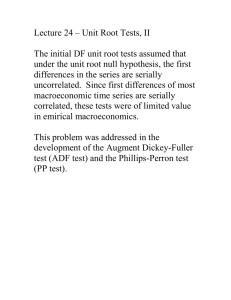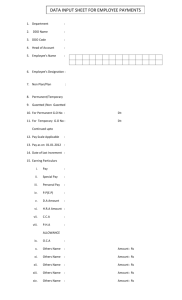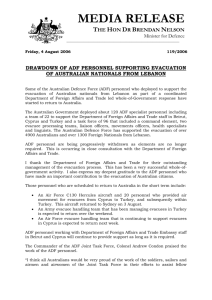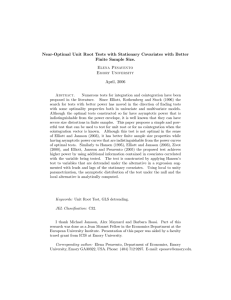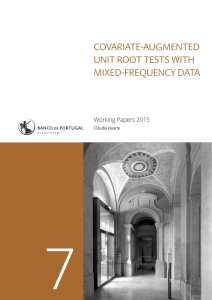t3-99313
advertisement
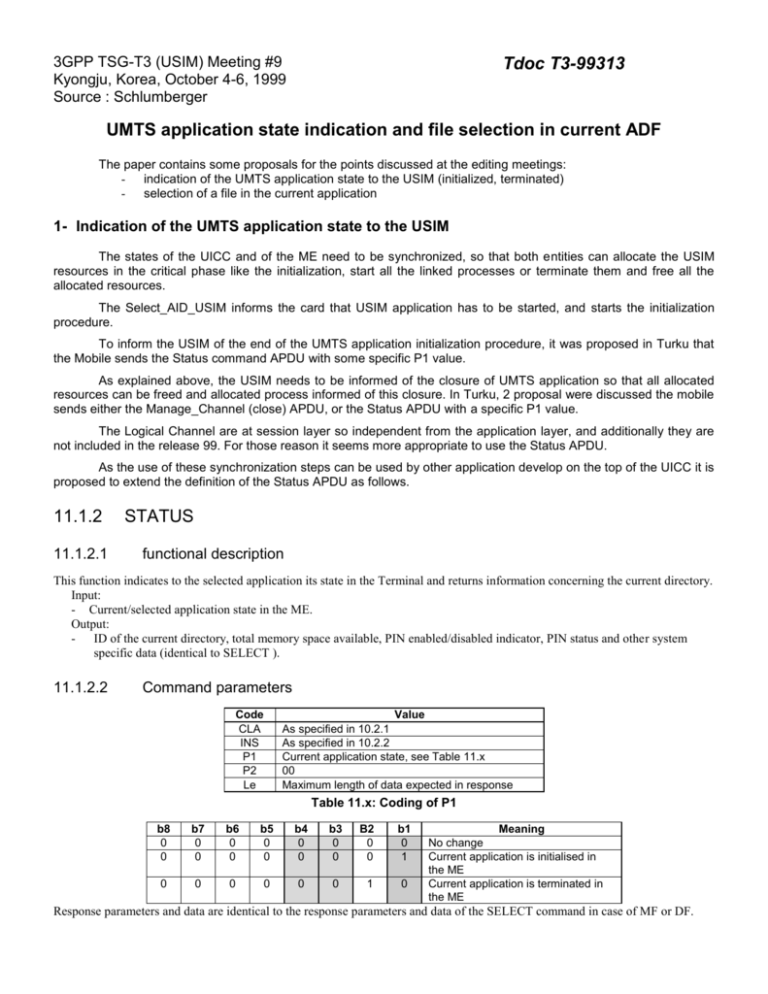
3GPP TSG-T3 (USIM) Meeting #9 Kyongju, Korea, October 4-6, 1999 Source : Schlumberger Tdoc T3-99313 UMTS application state indication and file selection in current ADF The paper contains some proposals for the points discussed at the editing meetings: - indication of the UMTS application state to the USIM (initialized, terminated) - selection of a file in the current application 1- Indication of the UMTS application state to the USIM The states of the UICC and of the ME need to be synchronized, so that both entities can allocate the USIM resources in the critical phase like the initialization, start all the linked processes or terminate them and free all the allocated resources. The Select_AID_USIM informs the card that USIM application has to be started, and starts the initialization procedure. To inform the USIM of the end of the UMTS application initialization procedure, it was proposed in Turku that the Mobile sends the Status command APDU with some specific P1 value. As explained above, the USIM needs to be informed of the closure of UMTS application so that all allocated resources can be freed and allocated process informed of this closure. In Turku, 2 proposal were discussed the mobile sends either the Manage_Channel (close) APDU, or the Status APDU with a specific P1 value. The Logical Channel are at session layer so independent from the application layer, and additionally they are not included in the release 99. For those reason it seems more appropriate to use the Status APDU. As the use of these synchronization steps can be used by other application develop on the top of the UICC it is proposed to extend the definition of the Status APDU as follows. 11.1.2 11.1.2.1 STATUS functional description This function indicates to the selected application its state in the Terminal and returns information concerning the current directory. Input: - Current/selected application state in the ME. Output: - ID of the current directory, total memory space available, PIN enabled/disabled indicator, PIN status and other system specific data (identical to SELECT ). 11.1.2.2 Command parameters Code CLA INS P1 P2 Le Value As specified in 10.2.1 As specified in 10.2.2 Current application state, see Table 11.x 00 Maximum length of data expected in response Table 11.x: Coding of P1 b8 0 0 b7 0 0 b6 0 0 b5 0 0 b4 0 0 b3 0 0 B2 0 0 b1 0 1 0 0 0 0 0 0 1 0 Meaning No change Current application is initialised in the ME Current application is terminated in the ME Response parameters and data are identical to the response parameters and data of the SELECT command in case of MF or DF. 2- Selection of a File in the current application As exposed in Bonn, the ME may navigate in the application file structure (ADF) and also in the shared file structure under the MF the DF telecom. According to the current specification the mobile has no unique way to select a file under the ADF once it selected the DF telecom. The mobile will have to remember the path of the current application, which is optional according to the current specification and will vary from one card to an other. To avoid this situation it seems appropriate to define a way for the mobile to select the file structure (ADF) of the current application. The section 5.1.2 of ISO 7816-4 defines the file referencing methods, and defines the usage of the File Identifier '3FFF' for the referencing by path as follows : "If the identifier of the current DF is not known, the value '3FFF' (reserved value) can be used at the beginning of the path." We propose to add this feature in the UICC and to extend it so that "current DF" is changed to "current ADF". That way the mobile will be able to Select a shared file and then to select again a file of the current application using the path selection mechanism. We propose the following changes to the UICC specification : 8.4 File referencing A file identifier (ID) is used to address or identify a specific file. The file ID consists of two bytes and shall be coded in hexadecimal notation. File IDs shall be subject to the following conditions: - the file ID shall be assigned at the time of creation of the file concerned; - no two files under the same parent shall have the same ID; - a child and any parent, either immediate or remote in the hierarchy, e.g. grandparent, shall never have the same file ID. A path is a concatenation of file identifiers. The path begins with the identifier of the MF or of the current DF, and ends with the identifier of the file itself. If the identifier of the current ADF is unknown, the reserved value '3FFF' shall be used at the beginning of the path. A short file identifier is coded as 5 bits valued in the range from 1 to 30. No two files under the same parent shall have the same short file identifier. A DF name is coded on 1 to 16 bytes. The DF name is the AID and shall be unique within a card. […] 8.5.2 SELECT by Path Referencing A file, DF or EF, may be referenced by path, as defined in clause 8.4. Table 8.2 contains examples of selection by path from figure 8.6. The files EF and DF of the current ADF can be selected by starting the path with the file identifier '3FFF' (noted CADF). An ADF can only be selected by the Select Application APDU. Table 8.2: Examples of file selection by path Current Application None (MF) Last selected file MF, EF-DIR, EF1, DF1, EF2 ADF1 MF, EF-DIR, EF1, DF1, EF2 Example Selections ‘MF||EF1’, ‘MF||EF-DIR’, ‘MF||DF1’, ‘MF||DF1||EF2’, ‘CADF||EF1’, ‘CADF||EF-DIR’, ‘CADF||DF1’, ‘CADF||DF1||EF2’ ‘MF||EF1’, ‘MF||EF-DIR’, ‘MF||DF1’, ‘MF||DF1||EF2’, ‘CADF||EF3’, ‘CADF||DF3’, ‘CADF||DF3||EF4’, ‘CADF||DF3||DF5’, ‘CADF||DF3||DF5||EF7’, ‘CADF||DF4’, ‘CADF||DF4||EF5’, ‘CADF||DF4||EF6’, NOTE: at the plenary in Bonn we decided that an ADF may have a file ID. If an ADF has an ID then it is possible to make the last selection in table 8.2 otherwise it is not except if we define a default value for the ADF file ID – like ‘3F00’ for the MF.



